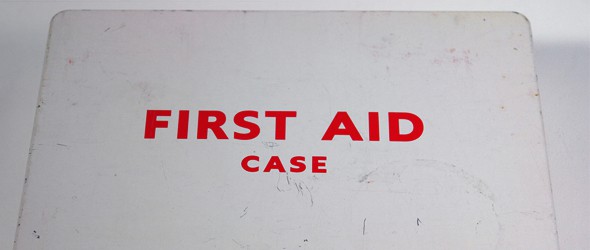Are your finances prepared and organized for a financial emergency?
Do you have a plan if a financial emergency occurs?
When our youngest son, Joshua, was born we started saying, “If he had been our first, he would have been our last.”
That little boy had more energy and could get into more scrapes than all our other children combined.
When he was eighteen months old, he stripped down to his diaper, took a plastic sword, and chased his four older siblings around the house, thus earning the nickname “Conan, the baby barbarian.”
By that age, he had also jumped off the top bunk bed (three stitches) and “flown” off our travel trailer (four stitches).
Joshua was the reason we purchased a serious first aid kit.
Just as every family needs a good first aid kit for those unexpected accidents, they also need a financial first aid kit, or practical ways to help safeguard their financial future.
I believe that every family can be ready for financial emergencies by assembling a well-stocked financial first aid kit.
1. An Emergency Savings Account
This account is not an investment account, it doesn’t include IRAs, retirement accounts or CDs.
Its purpose is not growth, but safety.
These are funds that are accessed in the event of unemployment, emergency home repairs, or unexpected medical bills.
The best way to build this account is to establish a family budget. I recommend automatically transferring funds from a paycheck or checking account into a savings account every week.
A good rule of thumb is to save three months’ worth of living expenses for dual-income households or six months for a single income family.
2. Life Insurance
This is an easy ingredient in your financial kit. You will need enough money so that your financial dependents could invest the money and live modestly on the proceeds.
For military members, the best buy is still SGLI, or Servicemember’s Group Life Insurance. The military pays a premium for the military member, to maximize the benefits. If your situation requires additional life insurance, go to USAA for the best rates for military members and their families.
3. A Will
Here’s another easy one. The main section of this critical document will assign a guardian for your children. In many states, the surviving spouse may only get one-third to one-half of the assets that were in your sole name.
Your children get the rest and if they are minors, a court administrator could handle their money until they become adults.
Make sure that the beneficiary designations on any 401(k) plans, IRAs, life insurance, and bank accounts are also up to date.
4. A Retirement Account
A surprising number of people do not take advantage of the terrific tax-deferred accounts offered by their employer, which include “401(k)” and “403(b)” plans if you are a reservist with another full-time job.
The Thrift Savings Plan (TSP) is a Federal Government-sponsored retirement savings and investment plan. This plan offers similar tax benefits to that which many private corporations offer their employees under “401(k)” plans and they are fully portable upon leaving the military.
5. A Good Credit Rating
The best way to rebuild a good FICO, or credit score, is found in three steps:
- pay more than your minimum payment (even if it’s only $5/month more)
- pay a day early rather than a day late (you can set up automatic transfers from your checking account to your credit card company for minimum payments)
- never let your available credit fall to less than 50% of the total credit available (for example, $2500 on a $5000 credit line.)
6. A College Fund for Those Babies!
Select a college savings account that has low fees, a good selection of investments, plus a tax break. One of the many options is a Qualified State Tuition Plan, also known as 529 Plans.
Begin to research your state’s plans. These contributions will be tax-deferred and could even be tax-deductible from your state income tax if you are a resident of that state.
When the money is withdrawn for college, it is only taxed at the student’s income tax rate.
If the child does not go to college, the money can be designated for another beneficiary or removed at a 10% penalty.
What is in your financial first aid kit?
TaxAct makes preparing and filing your taxes quick, easy and affordable so you get your maximum refund. It’s the best deal in tax. Start free now or sign into your TaxAct Account.
Photo credit: H is for Home via photopin cc





